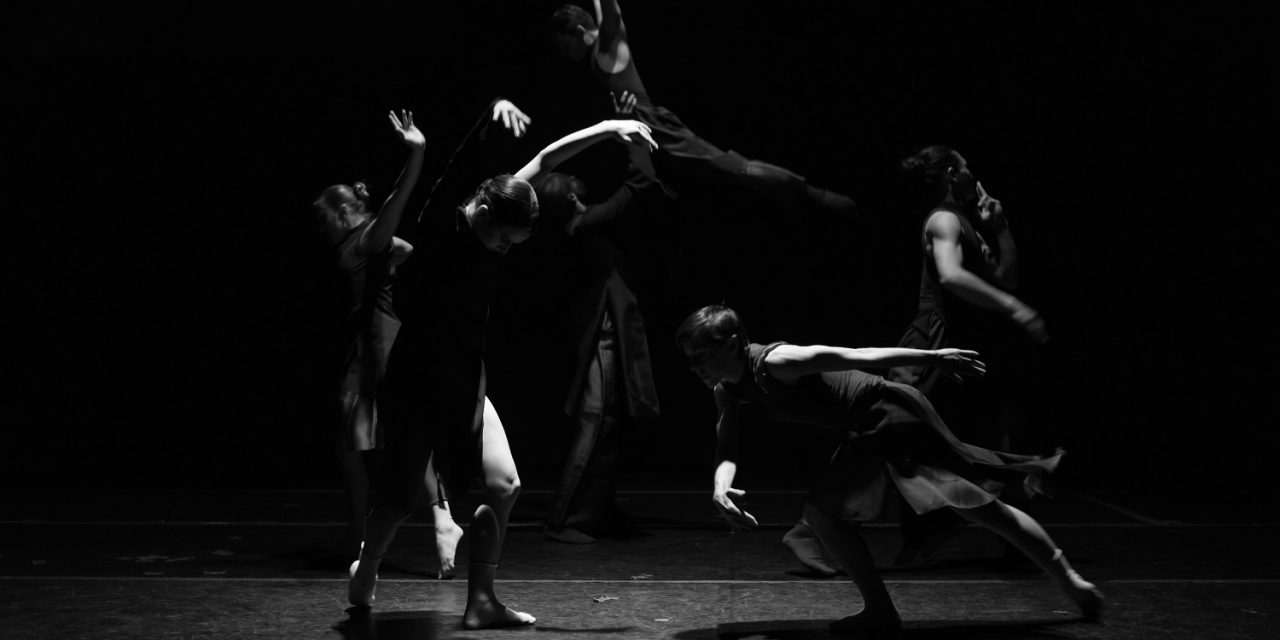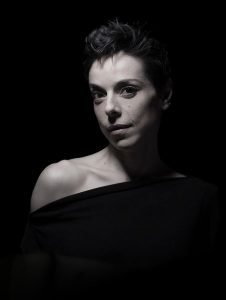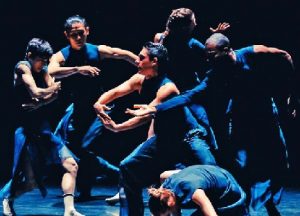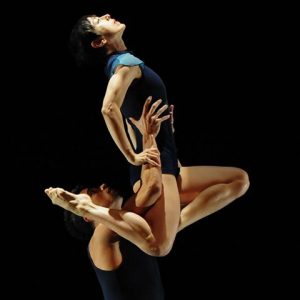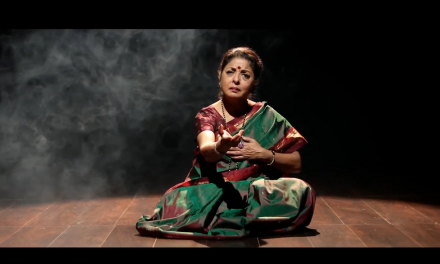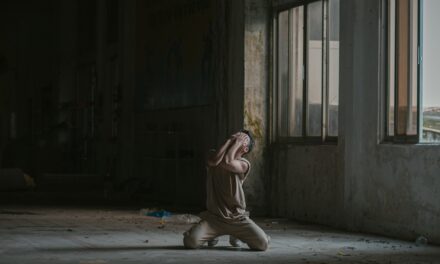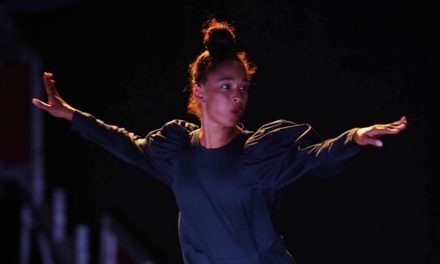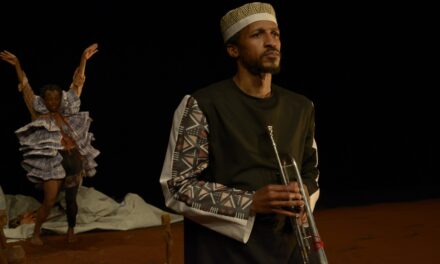Kybele Dance Theatre was founded in 2003 by Artistic Director and Choreographer Seda Aybay. Born and raised in Istanbul, Turkey, her choreography presented at the beautiful and intimate Théâtre Raymond Kabbaz was so ever-moving that it verged on blurring together into an unmemorable haze. The dancers are beautifully trained and wonderful performers, but I longed for stillness, quiet or a moment of physical and visual reflection. Even the lighting by Mark Baker and Seda Aybay was often hectic and dark, leaving the dancers lost in shadow.
Aybay trained in the ballet and contemporary modern dance. She is an extraordinary dancer and her work challenges the dancers’ stamina and technique with complicated, ever-busy movement phrases and intricate partnering.
Sonsuz is a lengthy work inspired by a poem written by the award winning American poet Mary Oliver. It is performed to music by Max Richter. One Turkish to English translation of the noun sonsuz is infinite, which clearly reflects the program notes of life after death or eternal love. Sonsuz is a dark work, both emotionally and visually. Opening with a beautiful solo by Seda Aybay that reflects on the past while peering into the future, the dance is weakened by an array of beautiful and difficult movement phrases strung together like multiple run-on sentences.
There is a short time that Aybay has placed herself on the edge of the stage, moving slowly while four dancers wind their way through a fast unison phrase filled with a sense of urgency. By putting herself on the edge of the stage, Aybay gives a new perspective and depth to the stage. A strong section involved two simultaneous, same-sex duets; both romantic in nature, but moving at very different speeds.
With Sonsuz, Aybay has a meaningful message to relate, but the work’s length and constant motion threatens to obscure her vision. One’s eyes rarely have a chance to settle a phrase or reflect on a visual meaning before it disappears into a maze of competing movements. There is a beautifully performed solo by Aybay and another by David Matthew Rodriguez. Genevieve Zander and Samantha-Jane Gray are lovely in their duet, as are Clinton Kyles and David Matthew Rodriguez. Also, Junji Dezaki is excellent in the work. The lighting for this work, however, was far from beneficial for view the work.
Noir is an attempt at a 1940’s detective story as seen in film noir or heard on old radio programs. What’s missing is a clear plot. A detective falls in love with the murderous femme fatale who takes advantage of his affection to escape punishment. Seda Aybay plays the shady woman and Clinton Kyles the detective. Genevieve Zander and Junji Dezaki portray a loving couple who become victims to the lady’s treachery. The spoken narrative states that the lady gets away with her crimes, but the dance itself looks unfinished. Baker and Aybay did a nice job with the use of silhouette, giving the piece the appropriate film noir look.
Kina has beautiful moments and extraordinary dancing. One of the strongest sections involves the entire cast of six dancers performing up stage in silhouette. At first the group moves and undulates as one. Then a single dancer breaks off or lifted high above before being absorbed back into the group. The movement is fast and filled with surprises. The work turns darker as Aybay examines how fundamentalist Islam suppresses women and people struggling to escape their own inhibitions. Again, Aybay threatens to obscure her meaning with an abundance of motion, but the dance does have moments of clarity. Here, Mark Baker’s lighting finds a good balance of light and shadow. The very talented cast includes Seda Aybay, Junji Dezaki, Genevieve Zander, Clinton Kyles, David Matthew Rodriguez and Sam Chin.
Seda Aybay’s work is rich with movement, purpose and thought-provoking images. That said, it suffers from a lack of trust that audiences are comfortable with stillness or a single figure sometimes doing very little. Not every second must be busy. Not every musical note has to be attached to a flurry of movement. Aybay also needs to pay attention to the recording of her music; the editing mistakes are glaring.

